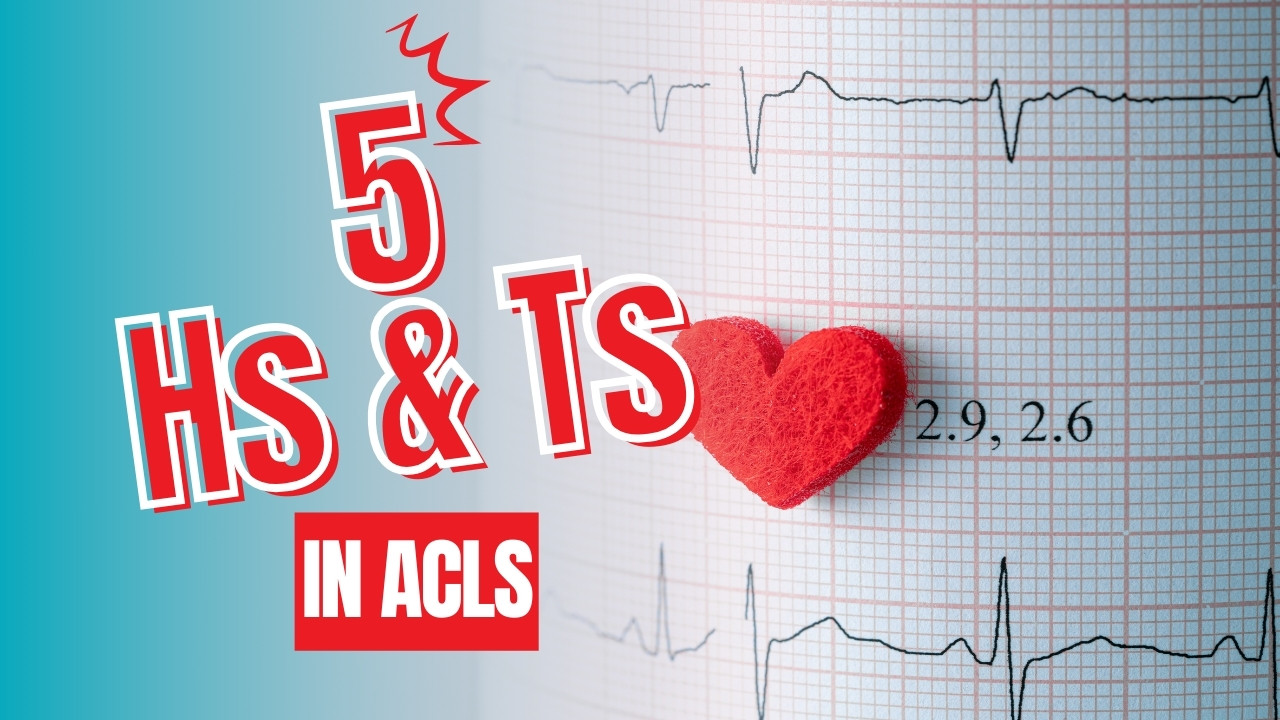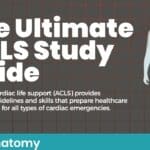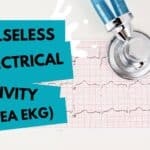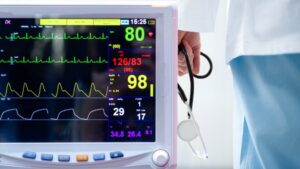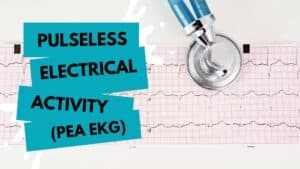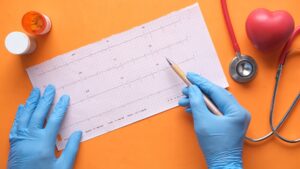Sudden cardiac arrest occurs when an irregular heart rhythm leads to a loss of all heart activity. Sudden cardiac arrest requires immediate medical treatment or it can result in death. However, emergency resuscitation procedures are just the first step in treating a cardiac arrest patient.
Advanced cardiac life support (ACLS) prepares you for sudden cardiac arrest events, teaching you basic life support (BLS) and airway management skills. Once emergency resuscitation efforts are successful, it is critical to identify any reversible causes of the abnormal arrhythmia and cardiac arrest. That’s where the critical importance of recognizing the Hs and Ts in ACLS training cannot be overstated.
What Are the Hs and Ts?
The Hs and Ts are a mnemonic device to help you remember the different contributing factors to sudden cardiac arrest due to pulseless electrical activity (PEA), asystole, ventricular tachycardia (Vtach), or ventricular fibrillation (Vfib). Keep in mind that more often than not, these factors are associated with PEA. However, knowledge of these factors can help you find underlying causes to other types of arrhythmias as well.
Breaking Down the Basics
There are 5 Hs and 5 Ts to help you quickly remember the reversible causes of cardiac arrest. When the underlying cause can be identified and treated quickly, you can significantly improve patient outcomes.
The 5 Hs:
Hypovolemia
Hypovolemia occurs when the body loses a significant amount of blood or fluid. It may be due to severe blood loss, vomiting or diarrhea, dehydration, and excessive sweating. If left untreated, it can progress to hypovolemic shock, which requires immediate treatment. Symptoms of hypovolemia include:
- Cold, clammy skin
- Pale color
- Dizziness
- Shallow breathing
- Decreased urine output
You may suspect hypovolemia if the victim has a rapid heart rate and the ECG shows a narrow QRS complex. Hypovolemia should be treated with IV fluids and blood if blood loss has
Hypoxia
Hypoxia is a condition characterized by low oxygen levels throughout the body or in a specific area of the body. It may be caused by some medical conditions, drowning, trauma, or a brain or spinal cord injury. Hypoxia symptoms may include:
- Restlessness
- Disorientation
- Cyanosis
- Anxiety
- Headache
You may detect hypoxia through a slowing heart rate or a pulse oximeter reading below 94%. Treatment involves clearing the patient’s airway and providing supplemental oxygenation.
Hydrogen Ion (Acidosis)
Acidosis occurs when there is a buildup of hydrogen ions that impair the circulatory system and reduce oxygen into the lungs. Both metabolic and respiratory acidosis may lead to cardiac arrest. Symptoms might include:
- Kussmaul’s respirations (deep, labored breathing)
- Headache
- Drowsiness
- Lethargy
Acidosis may present with low amplitude QRS and rapid respiratory rate. It can be confirmed with an arterial blood gas evaluation. Treatment involves adequate ventilation and administering sodium bicarbonate.
Hyper-/Hypokalemia
Metabolic disorders involving abnormal potassium levels can lead to cardiac arrest. Hyperkalemia occurs when potassium levels get too high, while hypokalemia is characterized by low potassium.
Symptoms of hyperkalemia include:
- Muscle twitching or cramping
- Tingling sensations
- Abdominal cramps and diarrhea
- Low blood pressure
You may detect hyperkalemia on an ECG from taller, peaked T waves and a widening QRS complex. Treatment might include an IV magnesium infusion.
Symptoms of hypokalemia might include:
- Muscle spasms or weakness
- Irritability
- Drowsiness
- Confusion
Hypokalemia may present as flattened T waves and a widening QRS complex on an ECG. Treatment involves potassium replacement.
Hypothermia
This condition occurs when a person’s body temperature drops below 86°F. Although it is not a common cause of cardiac arrest, it should be considered in some circumstances, especially drowning. Common symptoms of hypothermia include:
- Shivering
- Confusion
- Drowsiness
- Slurred speech
- Exhaustion
Warming measures should be taken immediately, including external warming via blankets, forced air, etc., and warm IV infusions.
The 5 Ts:
Tension Pneumothorax
This condition occurs when air becomes trapped in the pleural space. The buildup of tension can lead to cardiovascular collapse, which is life-threatening. It can occur due to respiratory diseases, trauma, or other factors. Symptoms of tension pneumothorax include:
- Anxiety
- Excessive sweating
- Diminished breathing
- Low blood pressure
- Sharp chest pain
You may detect tension pneumothorax on an ECG through a narrow QRS complex with rapid heart rate. Treatment for tension pneumothorax includes needle compression or a thoracostomy with chest tube.
Tamponade
Cardiac tamponade occurs when fluid accumulates in the pericardium, which prohibits the heart from pumping blood normally. It is often caused by trauma or inflammation of the pericardium. Symptoms may include:
- Jugular vein distension
- Rapid breathing
- Excessive sweating
- Chest pain
- Pale or blue skin color
During tamponade, the ECG may show a narrow QRS complex and rapid heart rate. Treatment for tamponade is pericardiocentesis.
Toxins
An accidental overdose of any number of medications can lead to cardiac arrest. Some of the most common include tricyclic antidepressants, beta-blockers, calcium channel blockers, benzodiazepines, opiates, and barbiturates. Alcohol and street drugs may also be a cause.
You may detect an overdose on an ECG through prolonged QT intervals. Symptoms and treatment will depend on the specific substance.
Thrombosis (Pulmonary)
Pulmonary thrombosis occurs when there is a blockage in the primary lung artery. It often occurs due to deep venous thrombosis (DVT). Symptoms preceding pulmonary thrombosis might include:
- Shortness of breath
- Chest pain
- Cough (with blood)
- Loss of consciousness
- Swelling of the lower extremity
Pulmonary thrombosis may display on the ECG with narrow QRS complexes and a rapid heart rate, along with the symptoms above. Treatment involves surgical intervention and fibrinolytic therapy.
Thrombosis (Pulmonary)
Pulmonary thrombosis occurs when there is a blockage in the primary lung artery. It often occurs due to deep venous thrombosis (DVT). Symptoms preceding pulmonary thrombosis might include:
- Shortness of breath
- Chest pain
- Cough (with blood)
- Loss of consciousness
- Swelling of the lower extremity
Pulmonary thrombosis may display on the ECG with narrow QRS complexes and a rapid heart rate, along with the symptoms above. Treatment involves surgical intervention and fibrinolytic therapy.
Thrombosis (Coronary)
Acidosis occurs when there is a buildup of hydrogen ions that impair the circulatory system and reduce oxygen into the lungs. Both metabolic and respiratory acidosis may lead to cardiac arrest. Symptoms might include:
- Kussmaul’s respirations (deep, labored breathing)
- Headache
- Drowsiness
- Lethargy
Acidosis may present with low amplitude QRS and rapid respiratory rate. It can be confirmed with an arterial blood gas evaluation. Treatment involves adequate ventilation and administering sodium bicarbonate.
Hs and Ts in ACLS: Bridging Knowledge to Practice
Knowing the Hs and Ts of cardiac arrest is an integral part of your ACLS training. Understanding the cause of cardiac arrest allows you to respond quickly to the underlying problem and possibly prevent additional complications from occurring. The H and T mnemonic will help you run down possible causes quickly, ensuring you can respond to your patient’s needs right away.
ACLS certification courses at SureFire CPR include training in the Hs and Ts, providing the information as well as practice time through a variety of role play scenarios. Our instructors are all professionals who have field experience in ACLS protocols and they are dedicated to making classes informative and fun.
Now is the time to take your professional development and your patient care to the next level with ACLS certification through SureFire CPR. With classes online, in-person, and on-site, you can find a course that fits your busy schedule. Contact us today to learn more about our class options or check out our current class schedule today.

